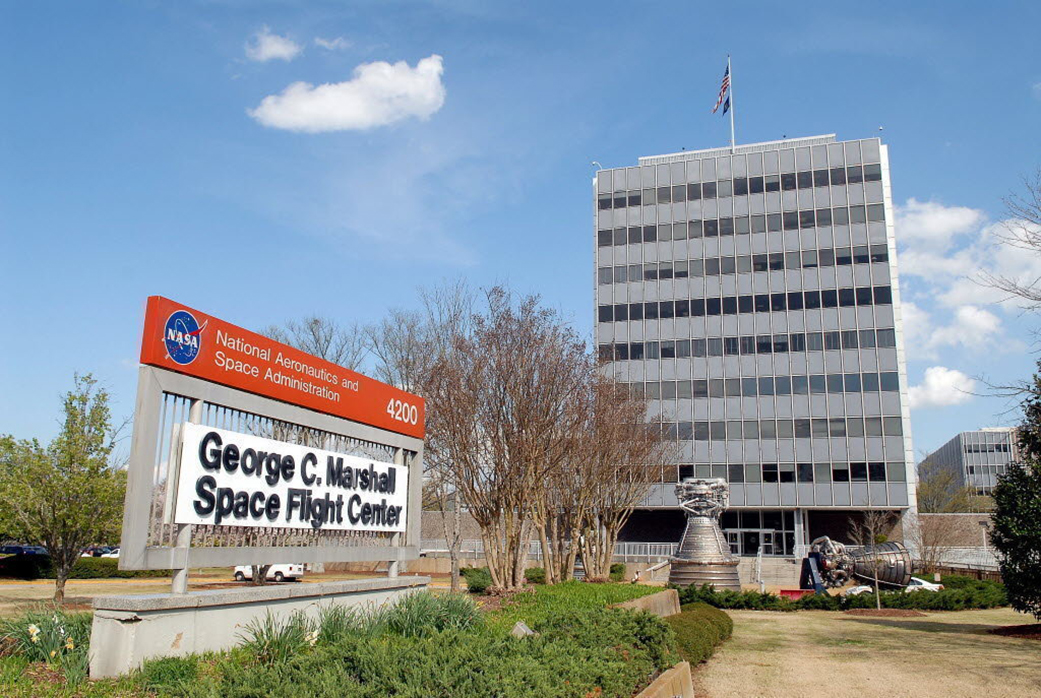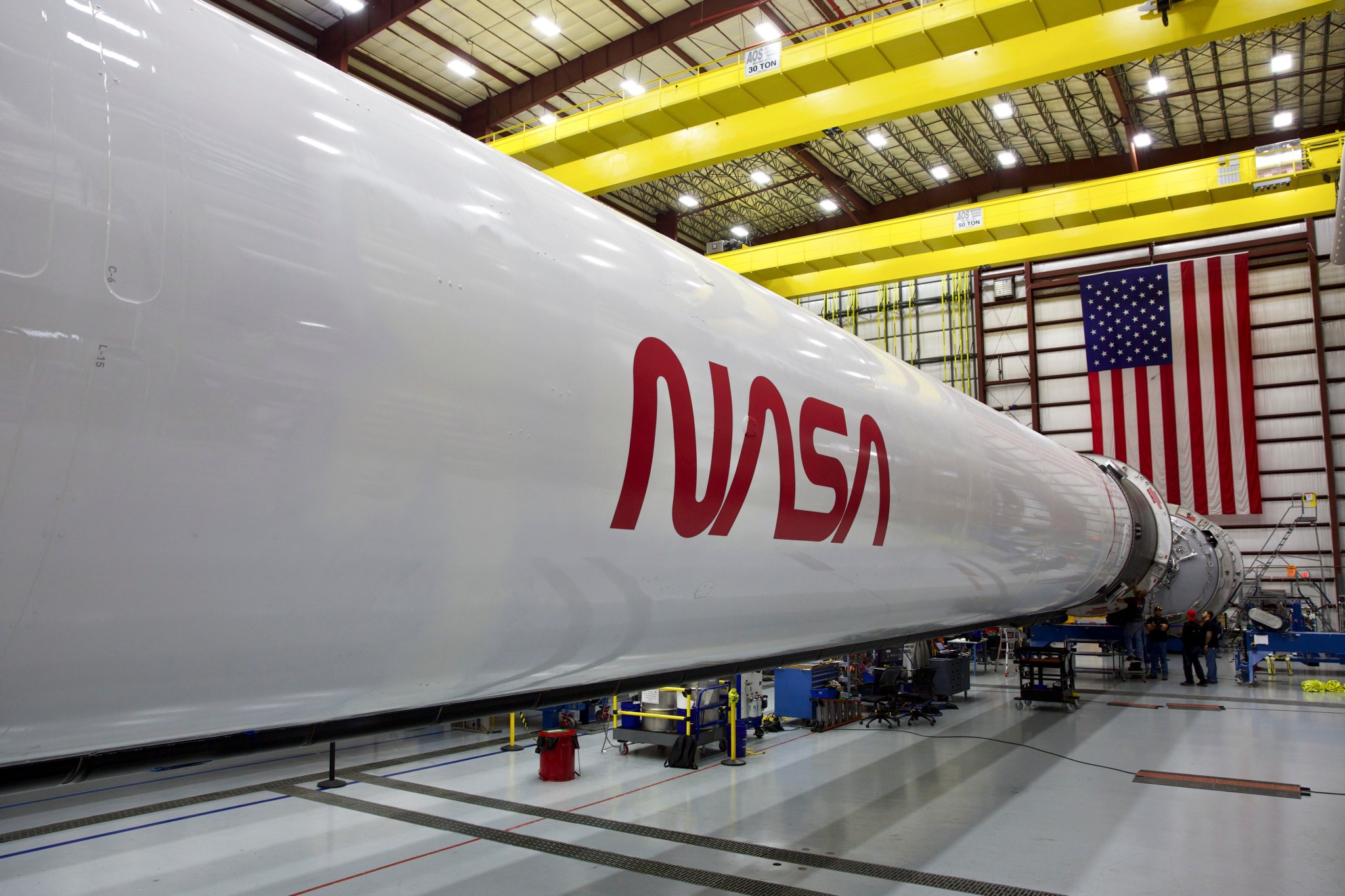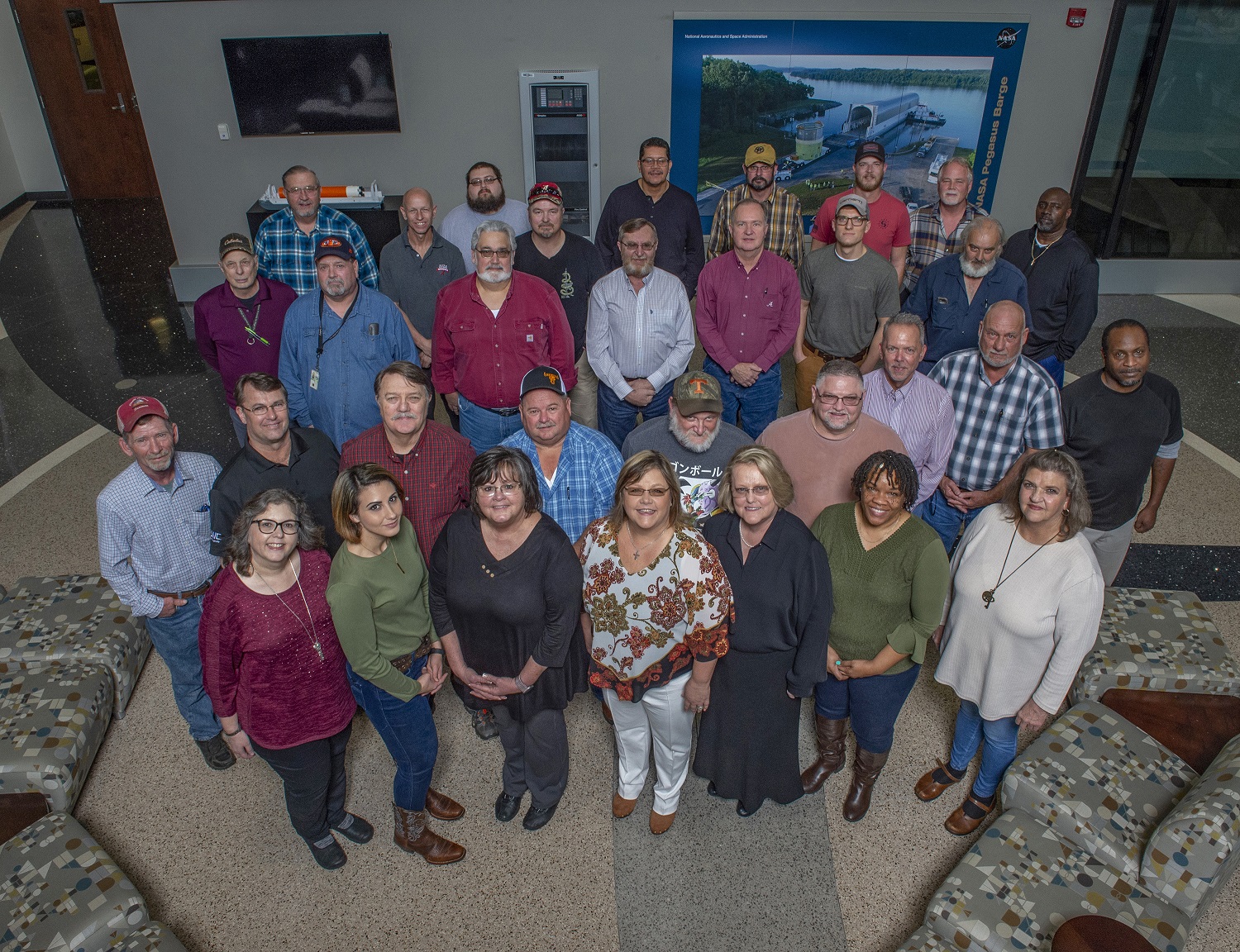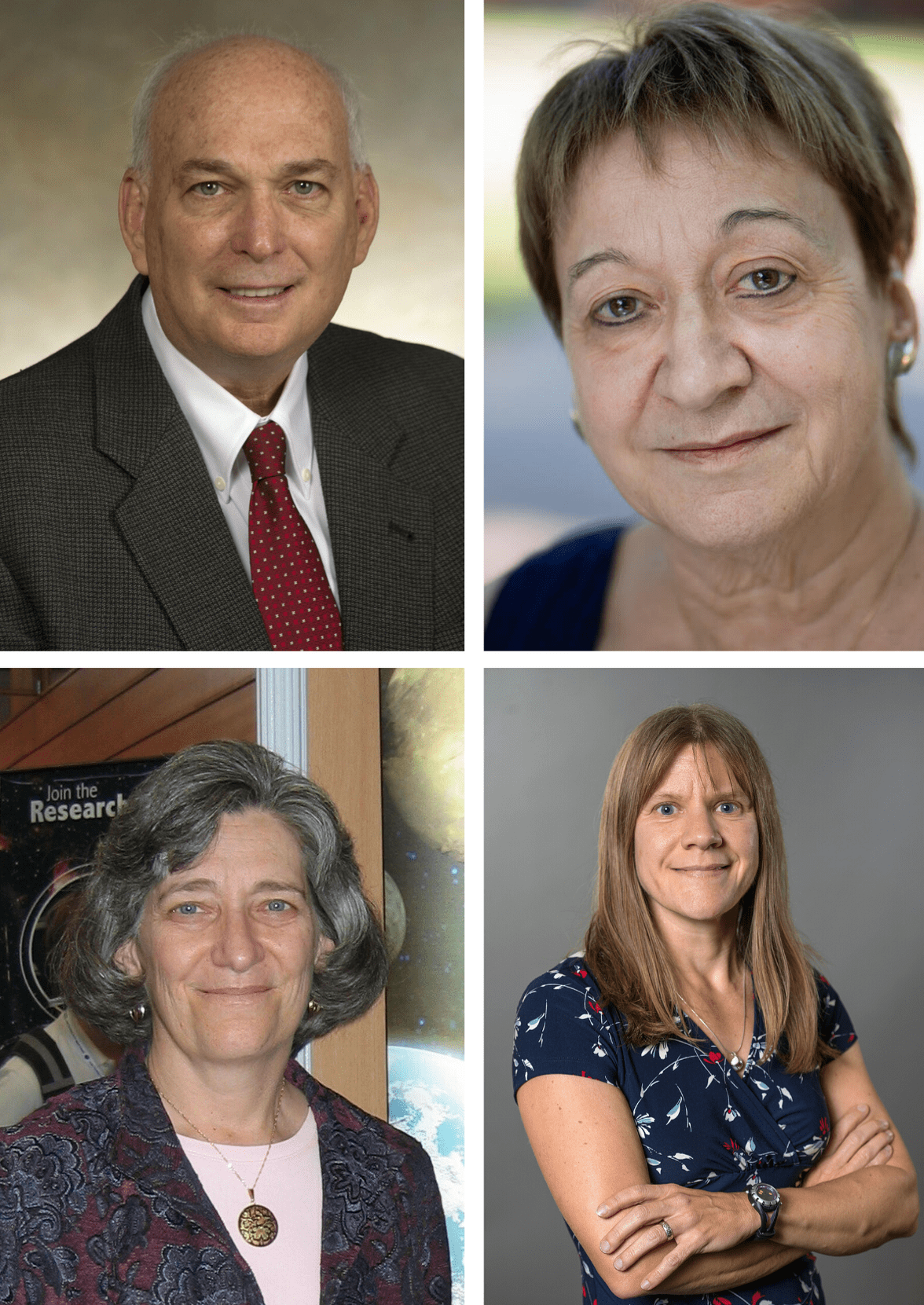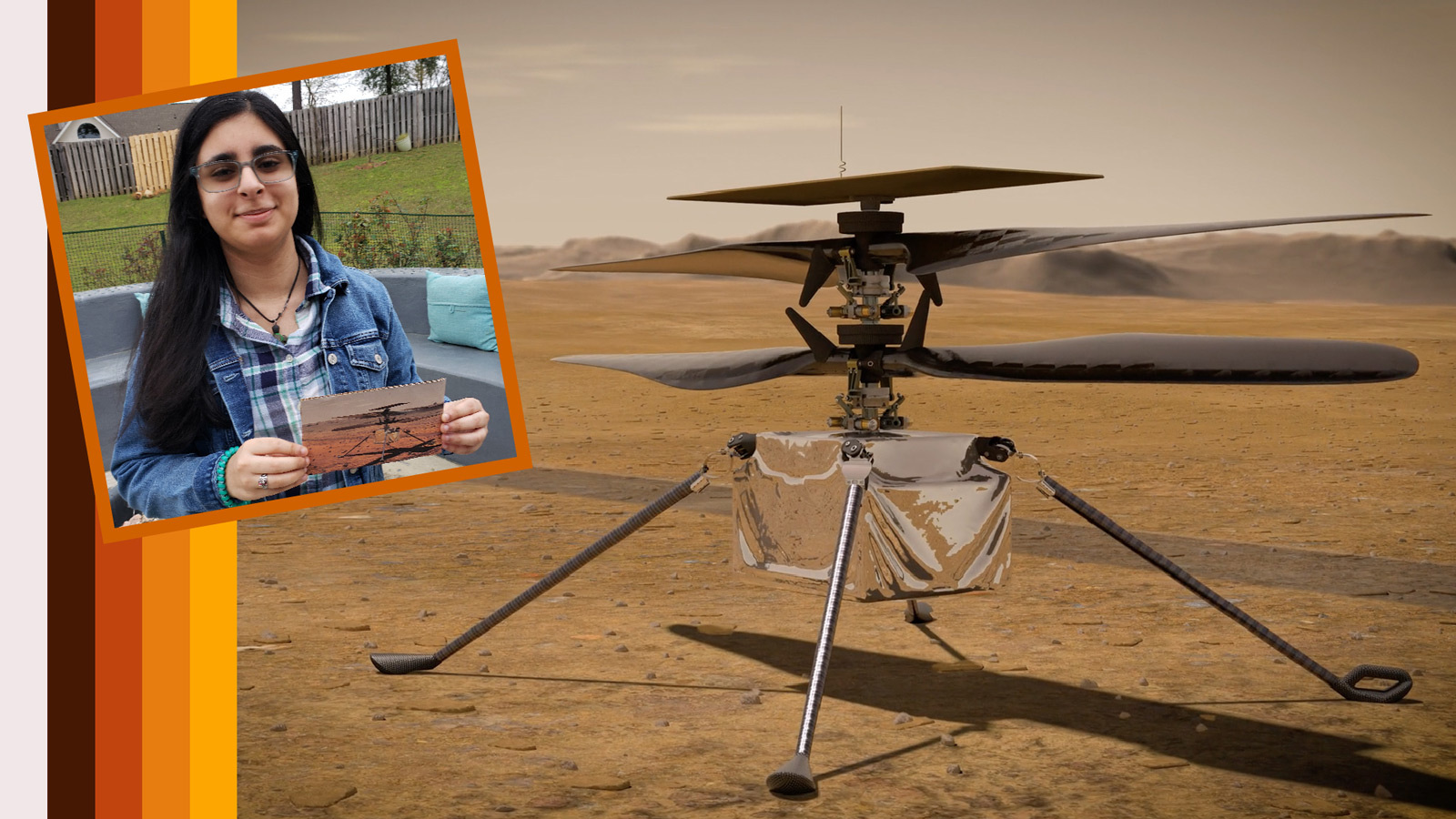In This Week’s Star
- NASA, Marshall Preparing Procedures for Safe Return to On-Site Work
- Marshall Team Prepares for Upcoming Commercial Crew Launch
- Property Management Group Wins Gears of Government Award
- American Astronomical Society Names Four Marshall-Affiliated Legacy Fellows
- Alabama High School Student Names NASA’s Mars Helicopter
- Star Survives Close Call With Black Hole
- Tech Talk Going Virtual With Parabilis Space Technology Principal Engineer
- This Week in NASA History: Astronauts Complete 200th Space Station Spacewalk – May 12, 2017
NASA, Marshall Preparing Procedures for Safe Return to On-Site Work
When NASA’s Marshall Space Flight Center team members return to on-site work, their health and safety will be paramount.
As COVID-19 conditions improve, NASA will conduct a phased and gradual return to work at agency centers and facilities. NASA recently updated its COVID-19 response framework to provide clarifications and additional guidance for moving back through stages. Marshall remains at Stage 4.
NASA leadership worked with center directors to develop plans on how to reopen the agency, NASA Administrator Jim Bridenstine said during a virtual agencywide town hall May 6.
“We as leaders of this agency are putting the health and safety of the workforce No. 1,” he said, “and as we go through this process, we’re going to go slowly. We’re going to go methodically. We’re certainly not going to do anything that puts anybody in danger, and we’re going to have all the mitigating guidelines in place as we move forward.”
At Marshall, planning is underway to transition safely, orderly and transparently as center leadership makes decisions about work that can resume on-site by evaluating local conditions, agency guidance, White House and Center for Disease Control and Prevention guidelines, Team Redstone and state guidance.
“The plans will evolve as we learn more about how to mitigate the effects of the virus on our center and community,” Marshall Director Jody Singer told employees in a centerwide message May 8. “The execution of these plans will take time for a reason — it must be a team effort.”
As Marshall restarts on-site work, priority is being given to work that supports critical International Space Station and Commercial Crew Program hardware, tasks on the critical path for the Artemis program, national security and regulatory and other national and international commitments.
Marshall team members should take responsibility for their personal safety. Those who are sick should stay home. Those returning to on-site work should practice social distancing – staying 6 feet apart – and follow other safety guidelines to prevent the spread of the virus. Marshall intends to provide a mask for those coming on-site to work. However, center mask supplies are low and Marshall leadership encourages all team members who can bring their own cloth face covering to do so. Team members should wear their mask or cloth face covering when social distancing isn’t possible.
“Your personal responsibility is sometimes staying home, especially if you have symptoms and/or are sick, to make sure that you’re not infecting others,” said Dr. JD Polk, NASA’s chief health and medical officer, during the town hall. “We’ve shown that we can work from afar, and we need to take that into account. So don’t be afraid to pull yourself out and say, ‘I’m having symptoms. I don’t think it’s good for me to go to work today.’”
Team members who don’t feel safe at work, or who identify a need for any accommodations, should notify their supervisor. Alternate work arrangements will be made without reservation or reprisal. Those who can accomplish their job via telework are encouraged to continue doing so, NASA Deputy Administrator Jim Morhard wrote in an agencywide message.
“Your safety is our No. 1, highest priority,” Bridenstine said during the town hall. “If people don’t feel comfortable going to work, either for themselves or for their loved ones at home, we want to do everything we can to accommodate those challenging circumstances.”
Marshall Team Prepares for Upcoming Commercial Crew Launch
By Janet Anderson and Taylor Goodwin
A new era of human spaceflight is set to begin as American astronauts Robert Behnken and Douglas Hurley once again launch on an American rocket from American soil to the International Space Station, this time as part of NASA’s Commercial Crew Program — the first U.S. launch with crew since the end of the Space Shuttle Program in 2011.
The Commercial Crew Program was formed to facilitate the development of a U.S. commercial crew space transportation capability with the goal of achieving safe, reliable and cost-effective access to and from the space station and low-Earth orbit.
The mission, known as Demo-2, is currently targeted for May 27 at 3:32 p.m. from Launch Complex 39A at NASA’s Kennedy Space Center. Behnken and Hurley will launch atop a Falcon 9 rocket, en route to an extended stay on the station.
“The Commercial Crew Program has challenged the traditional way of developing human spaceflight launch vehicles by shifting the way we think,” said Bobby Watkins, manager of the Human Exploration Development & Operations Office at Marshall. “This is a huge moment for NASA and its partners, and we are proud at Marshall to be a small part of this monumental mission.”
The Human Exploration Development & Operations Office supports the Commercial Crew Program with engineers who have helped review critical design and development documentation. The team also helps provide oversight of safety standards for the spacecraft and verifies data. For the launch, members of the team will be present in the Huntsville Operations Support Center at Marshall and will work closely with teams at SpaceX in Hawthorne, California, Kennedy and Johnson Space Center to monitor launch conditions.
The team has already conducted several simulations in the Huntsville Operations Support Center, and will continue to do so in preparation for launch. During the simulations, participants use headsets and voice loops to communicate with flight control teams at Kennedy, Johnson and SpaceX. Marshall team members help analyze data for the simulations in real time,
“Using the HOSC for the simulations protected our employees by not having them travel during the COVID-19 pandemic,” said Steve Gaddis, launch vehicle deputy manager for the Commercial Crew Program. “This recent sim makes the excitement all the more tangible — especially for the team here at Marshall.”
For almost 20 years, humans have continuously lived and worked aboard the space station, advancing scientific knowledge and demonstrating new technologies that enable NASA to prepare for human exploration to the Moon and Mars. The station’s design requires humans living aboard to maintain, operate and upgrade it; thus, space station operations, including commercial resupply and commercial crew, are essential to the mission. Marshall also supports the station by operating the Payload Operations Integration Center, which operates, plans and coordinates science experiments 24 hours a day, 365 days a year.
For more information on the Commercial Crew Program, visit here. For more information on the space station, visit here.
Anderson is a public affairs officer in Marshall’s Office of Strategic Analysis & Communications. Goodwin, an ASRC Federal/Analytical Services employee, supports the Office of Strategic Analysis & Communications.
Property Management Group Wins Gears of Government Award
By Taylor Goodwin
The Property Management Group at NASA’s Marshall Space Flight Center was recently awarded a 2020 Gears of Government Award.
The award recognizes individuals and teams across the federal workforce whose dedication supports exceptional delivery of key outcomes for the American people — specifically mission results, customer service and accountable stewardship. Each May, the Executive Office of the President presents exemplary Agency and Council Award recipients with the Gears of Government Award. The winning Marshall team, comprised of nearly 50 members, was selected for their outstanding performance in the accountable stewardship category.
According to the Gears of Government Awards’ Hall of Winners site, the team “improved stewardship, data accountability and communication with stakeholders of government property. Their continued efforts increase NASA’s research and development capabilities, saving NASA and taxpayers’ money.”
The team was recognized for demonstrating excellence in multiple tasks. The award package outlines the team’s accomplishments in auditing, furnishing, testing, network management, training, donation management, communication and partnerships.
“We can’t reach the Moon without logistics to support the supply chain,” said Gary Humphrey, Marshall supply equipment management officer. “The breadth of this award is so vast because it depends on property accountability, property stewardship and data accountability. It’s about improving the communication effort to keep our center running the best way it can.”
The Property Management Group successfully audited multiple contractors with government-furnished property. As agency leaders, the team maintained accounting for nearly 23,000 critical government assets. With an annual inventory accuracy of 99.97%, the team consistently exceeds the agency objective.
The Marshall team was recently selected by NASA Headquarters to complete testing and evaluation of the Radio Frequency Identification implementation program and physical inventory pilot program. Following successful testing, the pilot program transitioned to becoming the standard inventory tool for all NASA centers.
The NASA Integrated Communications Services contract — headquartered at Marshall — successfully supported local area network management at all NASA centers with over 14,000 assets. The Property Management Group managed the deployment of government assets across the agency and worldwide via NASA Integrated Communications Services.
The team developed training that standardizes equipment and supply management business practices. They provided this training to centers agencywide.
The Property Management Group maintained relationships with multiple agencies that support diversity and equal opportunity to provide students with disabilities an opportunity to participate in logistics business processes under the guidance of a NASA mentor.
The team manages donations of excess property that most recently included items valued at $54 million that were donated to eligible schools and educational nonprofits. These donations are a viable method to support science, technology, engineering and mathematics educational outreach and help the nation’s children meet high academic standards.
The team coordinated the furniture selection, purchase and installation of over 430 office spaces in Marshall’s Building 4221. In spite of construction delays and a government furlough, they negotiated the schedules to allow for furniture outfitting without delay or additional costs. The team also established an office furniture ergonomic program that supports employee health by establishing that 20% of all new desks in new office environments have the ability to raise — allowing the employees who have a need to stand while working to do so.
The Property Management Group partners with the Alabama Institute for Deaf and Blind to provide office supplies to Marshall yearly. The institute is a government-sanctioned supplier that supports green purchasing requirements and its Base Supply Center location on Redstone Arsenal provides a partnership opportunity that helps achieve NASA’s mission.
The team successfully supported and managed the reutilization of Air Force specialized property from a decommissioned facility through receiving, processing, disposition and temporary storage. This property has a parallel purpose in space research and increases NASA’s research and development capabilities, saving NASA and the taxpayers’ money.
Goodwin, an ASRC Federal/Analytical Services employee, supports Marshall’s Office of Strategic Analysis & Communications.
American Astronomical Society Names Four Marshall-Affiliated Legacy Fellows
Four scientists working at or affiliated with NASA’s Marshall Space Flight Center have been named fellows of the American Astronomical Society, the major organization of professional astronomers in North America.
The honorees were Gerald “Jerry” Fishman, Chryssa Kouveliotou, Melissa McGrath and Colleen Wilson-Hodge.
“Congratulations to each of these outstanding fellows,” Marshall Chief Scientist Renee Weber said. “They have collectively forged multiple paths to new discovery in space science and continue to inspire the Marshall scientists and engineers who build upon their legacy.”
The American Astronomical Society Fellows program was established in 2019 to honor members for their contributions toward the society’s mission of enhancing and sharing humanity’s scientific understanding of the universe. Being named a fellow honors members for extraordinary achievement and service. Fellows are recognized for original research and publication, innovative contributions to astronomical techniques or instrumentation, significant contributions to education and public outreach, and noteworthy service to astronomy and to the society itself.
The society’s board of trustees has designated an initial group of more than 200 legacy fellows. These include past recipients of certain awards from the society or its topical divisions, distinguished society elected leaders and volunteer committee members, and previously unrecognized individuals with long histories of outstanding research, teaching, mentoring and service.
Fishman is an emeritus scientist specializing in gamma-ray astronomy. He joined Marshall in 1974 and became principal investigator for the Burst and Transient Source Experiment, an extremely sensitive gamma-ray burst detector that flew on NASA’s Compton Gamma Ray Observatory from 1991-2000. He was also co-investigator on the Gamma-ray Burst Monitor, a key instrument aboard the Fermi Gamma-ray Space Telescope, which was launched in 2008 and is still in operation.
Kouveliotou is a professor at George Washington University in Washington, and the recently elected physics department chair. She was formerly the senior technologist in high-energy astrophysics at Marshall. Her research has expanded the scientific understanding of fleeting, transient gamma-ray phenomena in the Milky Way galaxy and throughout the high-energy universe. She and her team made the first confirmed detection of neutron stars with extremely powerful magnetic fields, called magnetars — the cinders of stars left over after a supernova explosion. As a NASA scientist from 2004 to 2015, she worked on numerous astrophysics missions.
McGrath was the chief scientist at Marshall from 2005 to 2015. Prior to that, at the Space Telescope Science Institute, she worked for 13 years on the Hubble Space Telescope project. After retiring from NASA, she joined the SETI Institute in Mountain View, California, where her primary focus is co-investigator on three instruments selected for the European Space Agency’s JUpiter ICy moons Explorer mission to Ganymede, and the NASA Europa Clipper mission to Europa. Her research expertise includes planetary and satellites atmospheres and magnetospheres, particularly imaging and spectroscopic studies of Jupiter’s Galilean satellites.
Wilson-Hodge first came to Marshall as an undergraduate cooperative education student in 1989. She joined the Astrophysics Branch full time in 1992. Her research interests have focused on accretion powered pulsars, the Crab Nebula, X-ray binaries and gamma-ray bursts. In 2016, she became the principal investigator for the Fermi Gamma-ray Burst Monitor. She continues to coordinate gravitational wave counterpart searches, studies accreting pulsars and is the project scientist for the proposed LargE Area burst Polarimeter mission.
A list of 29 NASA-affiliated legacy fellows is available here.
Alabama High School Student Names NASA’s Mars Helicopter
Destined to become the first aircraft to attempt powered flight on another planet, NASA’s Mars Helicopter officially has received a new name: Ingenuity.
Vaneeza Rupani, a junior at Tuscaloosa County High School in Northport, Alabama, came up with the name and the motivation behind it during NASA’s “Name the Rover” essay contest.
“The ingenuity and brilliance of people working hard to overcome the challenges of interplanetary travel are what allow us all to experience the wonders of space exploration,” Rupani wrote in her contest submission. “Ingenuity is what allows people to accomplish amazing things, and it allows us to expand our horizons to the edges of the universe.”
Rupani’s was among 28,000 essays submitted to NASA by K-12 students from every U.S. state and territory recommending names for the next Mars rover. In March, the agency announced that seventh-grader Alexander Mather’s essay earned him the honor of naming the rover Perseverance. But with so many good essays, it seemed fitting to also choose a name for the helicopter that will accompany the rover to Mars. So, NASA officials went back to the submitted essays to choose a name for the helicopter. Thomas Zurbuchen, associate administrator of NASA’s Science Mission Directorate, made the choice for the rover’s name, and NASA Administrator Jim Bridenstine chose the name for the helicopter.
“As a proud Alabamian, it’s fantastic to learn that Vaneeza Rupani has named the Mars Helicopter,” said Jody Singer, director of NASA’s Marshall Space Flight Center. “’Ingenuity’ captures the creative spirit of the Artemis Generation, who are going to be taking the next steps into space that lead us to Mars. This inspiring work requires inventiveness to innovate for the unique environment of space, but also the practical knowledge to tackle challenges along the way. It’s a delicate balance, but this combination of imagination and skill is at the heart of exploration and discovery.”
Perseverance and Ingenuity are undergoing final assembly and checkout at the agency’s Kennedy Space Center. They will launch on a United Launch Alliance Atlas V rocket from Space Launch Complex 41 at nearby Cape Canaveral Air Force Station in Florida July and land at Mars’ Jezero Crater on Feb. 18, 2021.
NASA’s Jet Propulsion Laboratory is building and will manage operations of Perseverance and Ingenuity for the agency. NASA’s Launch Services Program, based at Kennedy, is responsible for launch management. Lockheed Martin Space in Boulder, Colorado, provided the Mars Helicopter Delivery System. Caltech in Pasadena, California, manages JPL for NASA.
The “Name the Rover” contest partnership was part of a Space Act Agreement in educational and public outreach efforts between NASA, Battelle of Columbus, Ohio, and Future Engineers of Burbank, California. Amazon Web Services is an additional prize provider for the contest.
The Mars 2020 Perseverance rover mission is part of a larger program that includes missions to the Moon as a way to prepare for human exploration of the Red Planet. Through its Artemis program, NASA intends to land the first woman and the next man on the lunar surface in 2024 and establish a sustained human presence on and around the Moon by 2028, using it as a stepping stone to sending astronauts to Mars.
For more information about Ingenuity, visit here.
Star Survives Close Call With Black Hole
Astronomers may have discovered a new kind of survival story: a star that had a brush with a giant black hole and lived to tell the tale via bursts of X-rays.
Data from NASA’s Chandra X-ray Observatory and the European Space Agency’s XMM-Newton uncovered the event, caused by a red giant star passing too close to a supermassive black hole in a galaxy dubbed GSN 069, about 250 million light-years from Earth. The black hole has a mass about 400,000 times that of the Sun, putting it on the small end of the scale for such cosmic phenomena.
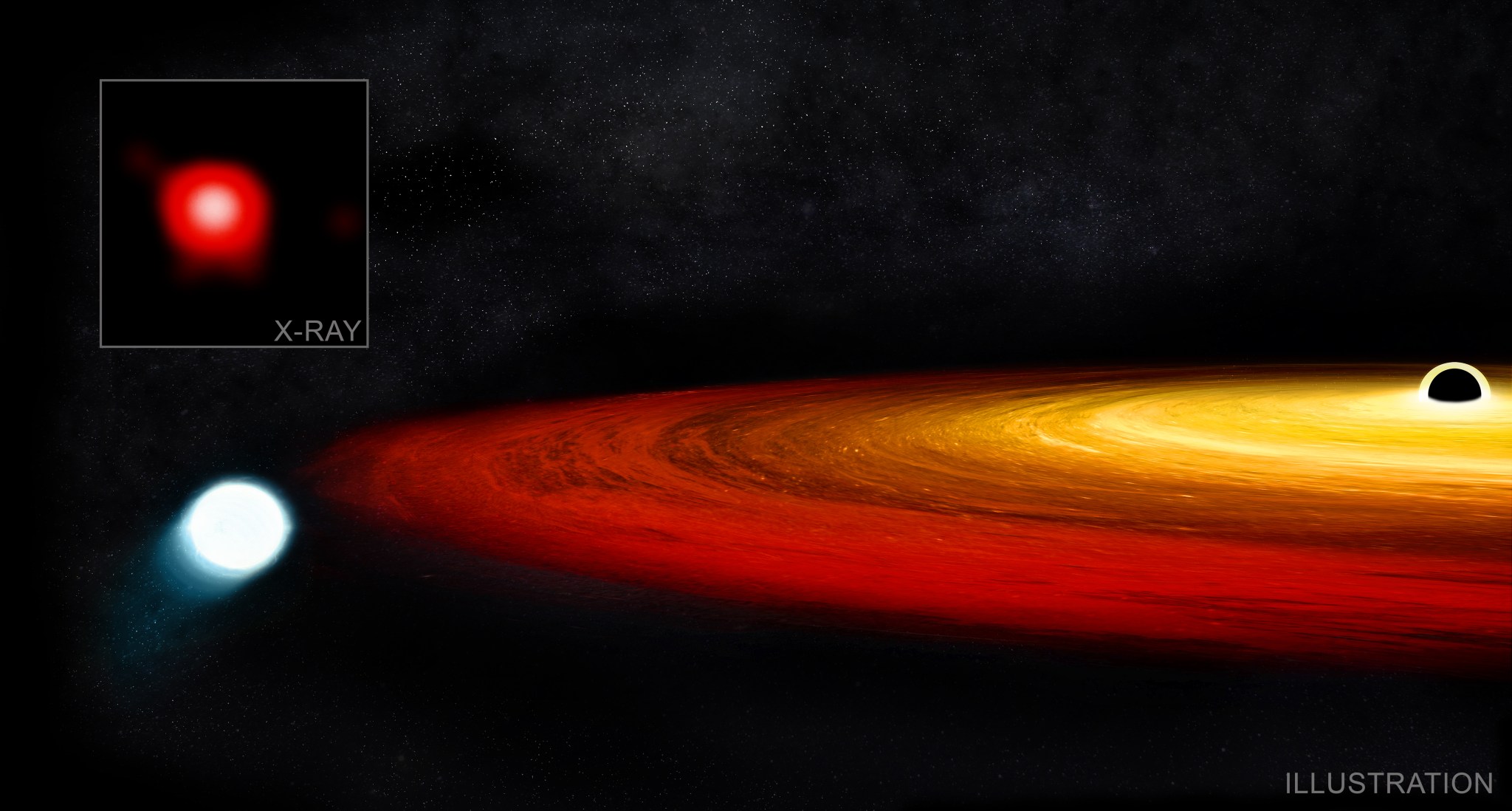
Data from NASA’s Chandra X-ray Observatory and ESA’s XMM-Newton uncovered the account that began with a red giant star wandering too close to a supermassive black hole in a galaxy about 250 million light years from Earth. The black hole, located in a galaxy called GSN 069, has a mass about 400,000 times that of the Sun, putting it on the small end of the scale for supermassive black holes. Credits: X-ray: NASA/CXO/CSIC-INTA/G.Miniutti et al.; Illustration: NASA/CXC/M. Weiss;
Once the red giant was captured by the black hole’s gravity, the outer layers of the star containing hydrogen were stripped off and careened toward the black hole, leaving the core of the star — known as a white dwarf — behind.
“In my interpretation of the X-ray data the white dwarf survived, but it did not escape,” said Andrew King, of the University of Leicester in England, who performed the study. “It is now caught in an elliptical orbit around the black hole, making one trip around about once every nine hours.”
As the white dwarf makes its nearly thrice-daily orbit, the black hole pulls material off at its closest approach, some 15 times the radius of the event horizon — or the point of no return — away from the black hole. The stellar detritus enters into a disk surrounding the black hole and releases a burst of X-rays that Chandra and XMM-Newton can detect. In addition, King predicts gravitational waves will be emitted by the black hole and white dwarf pair, especially at their nearest point.
King anticipates that the combined effect of gravitational waves and an increase in the star’s size as it loses mass should cause its orbit to become wider and more circular, slowing its loss of mass and eventually sending the white dwarf spiraling slowly away from the black hole.
“It will try hard to get away, but there is no escape. The black hole will eat it more and more slowly, but never stop,” said King. “In principle, this loss of mass would continue until, and even after, the white dwarf became a planet, with a mass similar to Jupiter, in about a trillion years. This would be a remarkably slow and convoluted way for the universe to make a planet!”
Astronomers have found many stars that have been completely torn apart by encounters with black holes — dubbed tidal disruption events — but there are very few reported cases of near misses, in which the star likely survived.
Grazing encounters like this should be more common than direct collisions, given the statistics of cosmic traffic patterns, but they could easily be missed for a couple of reasons, King said. First, it can take a surviving star too long to complete an orbit around a black hole for astronomers to see repeated bursts. Black holes much more massive than the one in GSN 069 also may swallow a star whole. In these cases, astronomers wouldn’t observe anything.
“In astronomical terms, this event is only visible to our current telescopes for a short time — about 2,000 years,” King said. “So unless we were extraordinarily lucky to have caught this one, there may be many more that we are missing. Such encounters could be one of the main ways for black holes the size of the one in GSN 069 to grow.”
A paper on the findings appears in the March 2020 issue of the Monthly Notices of the Royal Astronomical Society.
NASA’s Marshall Space Flight Center manages the Chandra program. The Smithsonian Astrophysical Observatory’s Chandra X-ray Center controls science and flight operations from Cambridge and Burlington, Massachusetts.
Tech Talk Going Virtual With Parabilis Space Technology Principal Engineer
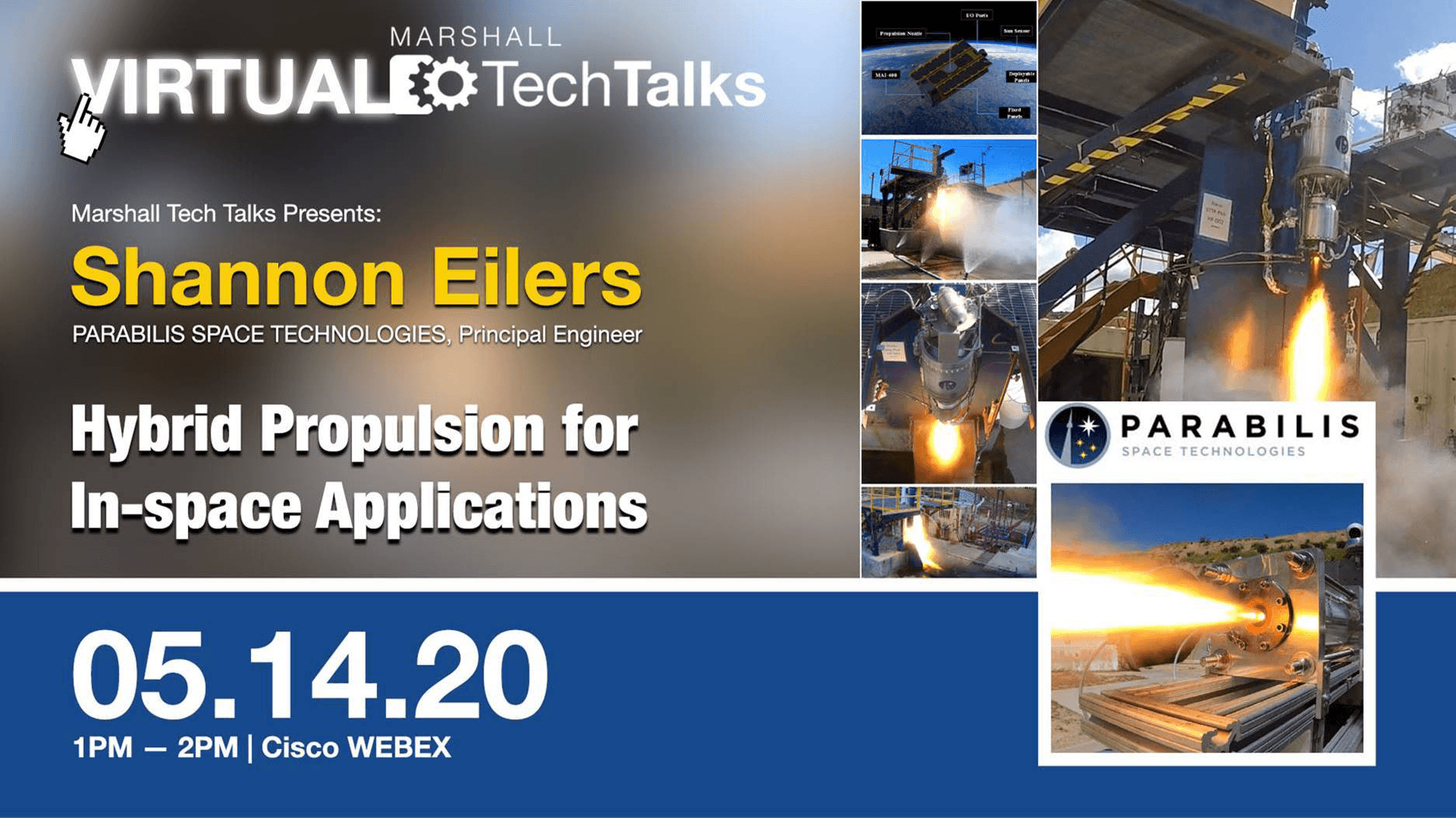
Despite the ongoing coronavirus pandemic, the monthly Tech Talk series at NASA’s Marshall Space Flight Center continues. On May 14 at 1 p.m., Shannon Eilers, principal engineer at Parabilis Space Technologies in San Marcos, California, will deliver a virtual Tech Talk on the company’s recent advancements in hybrid propulsion for in-space applications. The talk will be streamed via Webex, and the login information can be found here. The Tech Talk series is presented by the Marshall Center Chief Technologist’s Office. (NASA)
This Week in NASA History: Astronauts Complete 200th Space Station Spacewalk – May 12, 2017
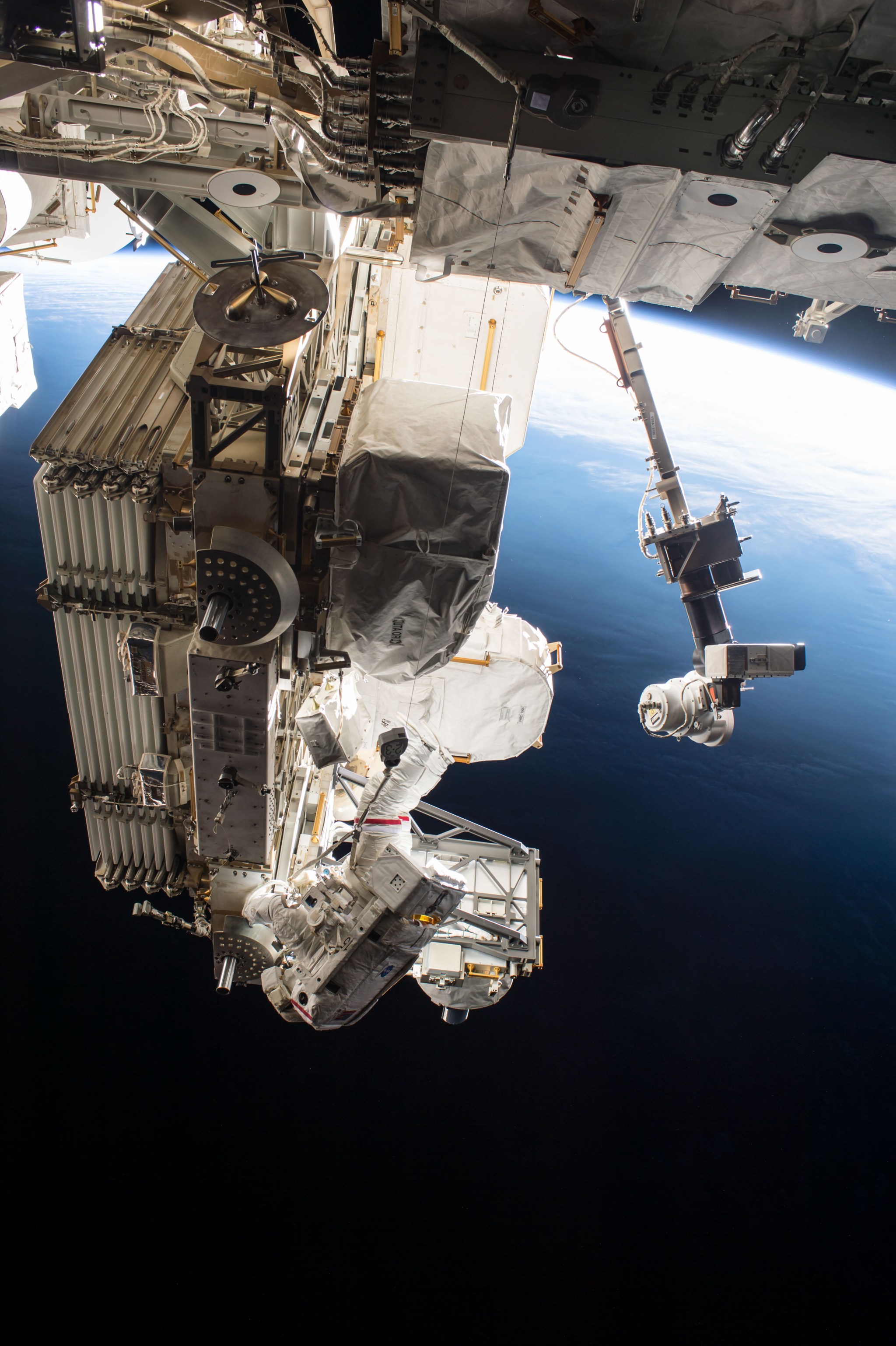
This week in 2017, astronauts Peggy Whitson and Jack Fisher completed the 200th spacewalk on the International Space Station. During the four-hour spacewalk, the astronauts replaced a large avionics box that supplies electricity and data connections to science experiments. They also completed additional tasks to install a connector that would route data to the Alpha Magnetic Spectrometer, repaired insulation at the connecting point of the Japanese robotic arm and installed a protective shield on the Pressurized Mating Adapter-3, which hosted a new international docking port for the arrival of commercial crew. The first space station walk was conducted by astronauts Jerry Ross and Jim Newman during space shuttle Endeavour’s STS-88 mission on Dec. 7, 1998. Today, the Payload Operations Integration Center at NASA’s Marshall Space Flight Center serves as “science central” for the space station, working 24/7, 365 days a year in support of the orbiting laboratory’s science experiments. After 20 years of continuous human presence, the space station remains the sole space-based proving ground and stepping stone toward achieving the goals of the Artemis program. The NASA History Program is responsible for generating, disseminating and preserving NASA’s remarkable history and providing a comprehensive understanding of the institutional, cultural, social, political, economic, technological and scientific aspects of NASA’s activities in aeronautics and space. For more pictures like this one and to connect to NASA’s history, visit the Marshall History Program’s webpage. (NASA)


























